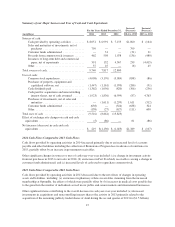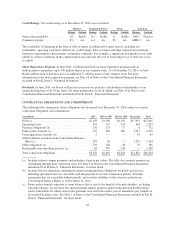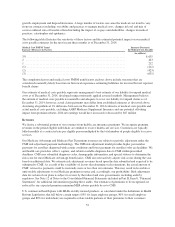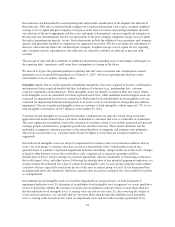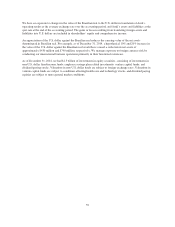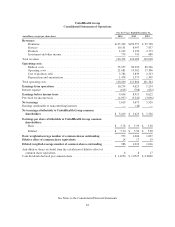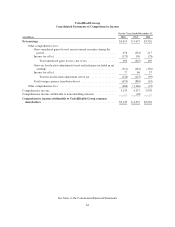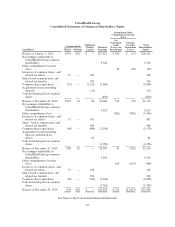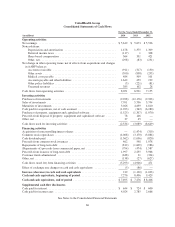United Healthcare 2014 Annual Report Download - page 58
Download and view the complete annual report
Please find page 58 of the 2014 United Healthcare annual report below. You can navigate through the pages in the report by either clicking on the pages listed below, or by using the keyword search tool below to find specific information within the annual report.impairment and the financial condition and near-term prospects of the issuer as well as specific events or
circumstances that may influence the operations of the issuer. Other factors included in the assessment include
the type and nature of the securities and their liquidity. Given the nature of our portfolio, primarily investment
grade securities, historical impairments were largely market related (e.g., interest rate fluctuations) as opposed to
credit related. We do not expect that trend to change in the near term. Our large cash holdings reduce the risk that
we will be required to sell a security. However, our intent to sell a security may change from period to period if
facts and circumstances change.
Our unrealized losses of $66 million and $234 million at December 31, 2014 and 2013, respectively, were
primarily caused by market interest rate increases and not by unfavorable changes in the credit standing. We
believe we will collect the principal and interest due on our debt securities with an amortized cost in excess of
fair value. We manage our investment portfolio to limit our exposure to any one issuer or market sector, and
largely limit our investments to U.S. government and agency securities; state and municipal securities; mortgage-
backed securities; and corporate debt obligations, substantially all of which are of investment-grade quality.
Securities downgraded below policy minimums after purchase will be disposed of in accordance with our
investment policy. Total other-than-temporary impairments for 2014, 2013 and 2012 were $26 million, $8
million and $6 million, respectively. Our available-for-sale debt portfolio had a weighted-average credit rating of
“AA” as of December 31, 2014. We have minimal securities collateralized by sub-prime or Alt-A securities, and
a minimal amount of commercial mortgage loans in default.
The judgments and estimates related to fair value and other-than-temporary impairment may ultimately prove to
be inaccurate due to many factors including: circumstances may change over time, industry sector and market
factors may differ from expectations and estimates or we may ultimately sell a security we previously intended to
hold. Our assessment of the financial condition and near-term prospects of the issuer may ultimately prove to be
inaccurate as time passes and new information becomes available, including changes to current facts and
circumstances, or as unknown or estimated unlikely trends develop.
As discussed further in Item 7A “Quantitative and Qualitative Disclosures About Market Risk” a 1% increase in
market interest rates would have the effect of decreasing the fair value of our investment portfolio by $683
million.
Income Taxes
Our provision for income taxes, deferred tax assets and liabilities, and uncertain tax positions reflect our
assessment of estimated future taxes to be paid on items in the consolidated financial statements.
Deferred income taxes arise from temporary differences between financial reporting and tax reporting bases of
assets and liabilities, as well as net operating loss and tax credit carryforwards for tax purposes. We have
established a valuation allowance against certain deferred tax assets for which it is more-likely-than-not that
some portion, or all, of the deferred tax asset will not be realized.
An uncertain tax position is recognized when it is more likely than not that the position will be sustained upon
examination, including resolutions of any related appeals or litigation processes, based on the technical merits.
We prepare and file tax returns based on our interpretation of tax laws and regulations and record estimates based
on these judgments and interpretations. In the normal course of business, our tax returns are subject to
examination by various taxing authorities. Such examinations may result in future tax and interest assessments by
these taxing authorities. Inherent uncertainties exist in estimates of tax positions due to changes in tax law
resulting from legislation, regulation or as concluded through the various jurisdictions’ tax court systems.
The significant assumptions and estimates described above are important contributors to our ultimate effective
tax rate in each year. A hypothetical increase or decrease in our effective tax rate by 1% on our 2014 earnings
before income taxes would have caused the provision for income taxes and net earnings to change by $97
million.
56



